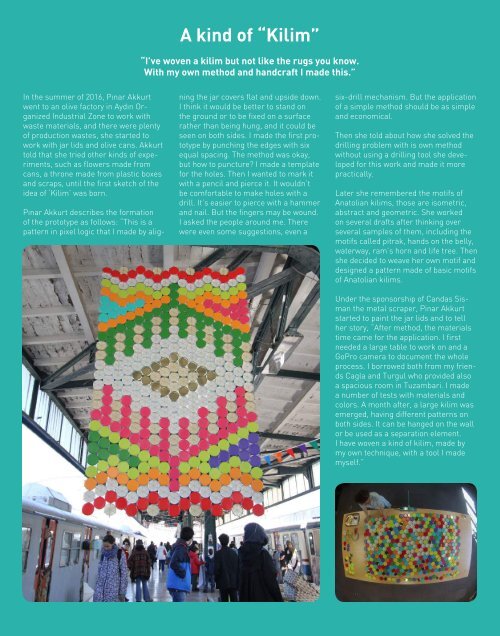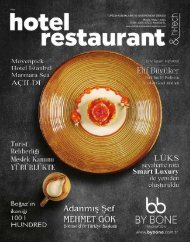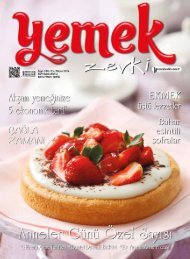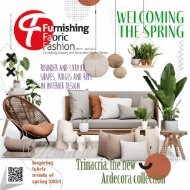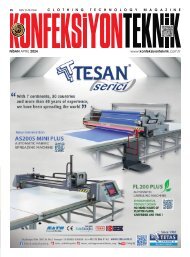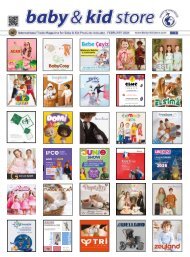Create successful ePaper yourself
Turn your PDF publications into a flip-book with our unique Google optimized e-Paper software.
A kind of “Kilim”<br />
“I’ve woven a kilim but not like the rugs you know.<br />
With my own method and handcraft I made this.”<br />
In the summer of 2016, Pınar Akkurt<br />
went to an olive factory in Aydın Organized<br />
Industrial Zone to work with<br />
waste materials, and there were plenty<br />
of production wastes, she started to<br />
work with jar lids and olive cans. Akkurt<br />
told that she tried other kinds of experiments,<br />
such as flowers made from<br />
cans, a throne made from plastic boxes<br />
and scraps, until the first sketch of the<br />
idea of ‘Kilim’ was born.<br />
Pınar Akkurt describes the formation<br />
of the prototype as follows: “This is a<br />
pattern in pixel logic that I made by aligning<br />
the jar covers flat and upside down.<br />
I think it would be better to stand on<br />
the ground or to be fixed on a surface<br />
rather than being hung, and it could be<br />
seen on both sides. I made the first prototype<br />
by punching the edges with six<br />
equal spacing. The method was okay,<br />
but how to puncture? I made a template<br />
for the holes. Then I wanted to mark it<br />
with a pencil and pierce it. It wouldn’t<br />
be comfortable to make holes with a<br />
drill. It’s easier to pierce with a hammer<br />
and nail. But the fingers may be wound.<br />
I asked the people around me. There<br />
were even some suggestions, even a<br />
six-drill mechanism. But the application<br />
of a simple method should be as simple<br />
and economical.<br />
Then she told about how she solved the<br />
drilling problem with is own method<br />
without using a drilling tool she developed<br />
for this work and made it more<br />
practically.<br />
Later she remembered the motifs of<br />
Anatolian kilims, those are isometric,<br />
abstract and geometric. She worked<br />
on several drafts after thinking over<br />
several samples of them, including the<br />
motifs called pitrak, hands on the belly,<br />
waterway, ram’s horn and life tree. Then<br />
she decided to weave her own motif and<br />
designed a pattern made of basic motifs<br />
of Anatolian kilims.<br />
Under the sponsorship of Candas Sisman<br />
the metal scraper, Pinar Akkurt<br />
started to paint the jar lids and to tell<br />
her story, “After method, the materials<br />
time came for the application. I first<br />
needed a large table to work on and a<br />
GoPro camera to document the whole<br />
process. I borrowed both from my friends<br />
Cagla and Turgul who provided also<br />
a spacious room in Tuzambari. I made<br />
a number of tests with materials and<br />
colors. A month after, a large kilim was<br />
emerged, having different patterns on<br />
both sides. It can be hanged on the wall<br />
or be used as a separation element.<br />
I have woven a kind of kilim, made by<br />
my own technique, with a tool I made<br />
myself.”<br />
17 DECOR • January - February <strong>2019</strong>


